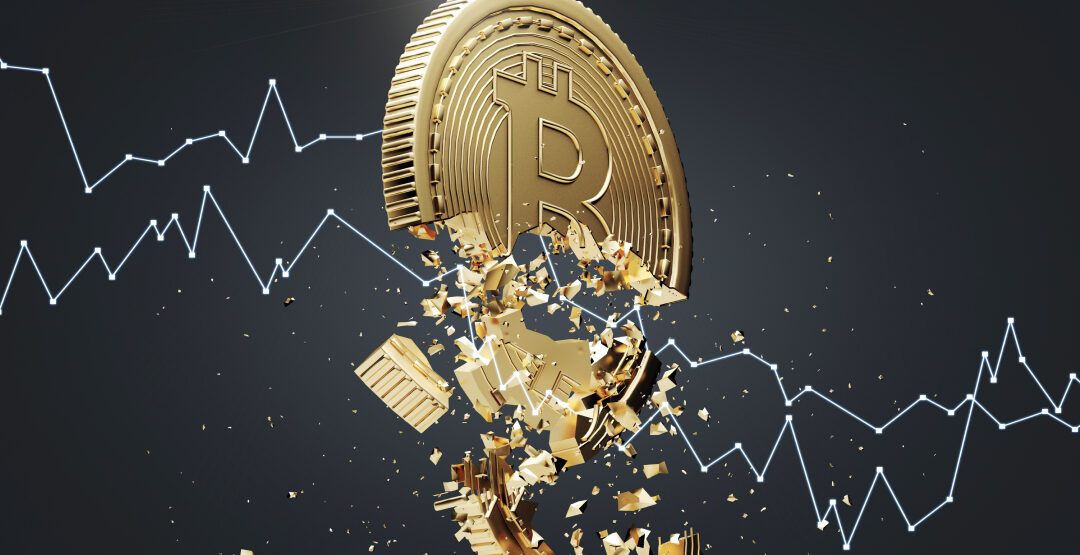Cryptocurrency, Speculative Bubbles, and the Markets
Financial markets ruthlessly sort nonsense from substance.
Is It Still Here?
Cryptocurrency staying power has certainly been challenged these last few years. There has been a general market drop (even correction), but crypto has been collapsing in value and, to many, it seemed to be in a death spiral – then during “last rites” it has somehow recovered.
The volatility and existential threat have been brutal. The market value for cryptocurrency was almost $3 trillion in November 2021, and now after a drop of more than 35%, cryptocurrency totals $1.3 trillion in value. A market decimation, to be sure.
Is there Something Other Than Bitcoin?
Better-known coins, such as Bitcoin, have dropped to their lowest levels in a couple of years. This is the reckoning that cryptocurrency cynics have been predicting for some time. It is not a currency, and its primary role enables money launderers and thieves. A drop of more than two-thirds of value can certainly be considered a crash, and this crash is convincing many that cryptocurrencies have seen their best days and are on their way to history’s dustbin.
Of course, the reality is more nuanced, and with more detailed analysis, a broad brush hardly seems appropriate. Certainly, the weakest and, honestly, craziest portions of the crypto world have been exposed to be nothing more than silliness. But some components remain resilient.
Markets Being Markets – Optimism Among the Ruins
This may be more cause for optimism than pessimism. When hit with the market’s best shot, there are some crypto still standing.
The crypto collapse was part of a broader market slump, driven by excessive inflation and tightening central bank monetary policy. This triggered a general selloff led by riskier assets. Technology companies and other such “transformational” assets that relied heavily on overly optimistic growth projections have seen significant corrections. The NASDAQ is down almost 30% from its high. The S&P 500 index is off almost 20%.
In this market maelstrom, crypto was the most significant victim. More importantly, the mass selloff exposed significant weaknesses at the far end of the crypto world.
Were They Making That Up?
Terra is the most outstanding recent example. An algorithmic stablecoin whose value is backed by another asset was supposed to be dependable and have a predictable value. An owner of Terra could redeem it for the same value as Luna, another cryptocurrency, which would be issued to meet demand. As Luna’s price began to drop, this put pressure on Terra, and there was nothing less than a spectacular run on the currency. 350 million Luna tokens turned into 6.5 trillion. Luna was worth $40 billion and was supported by $8 billion of Terra. Now, Luna is worthless, and as of this writing, Terra is trading at $0.10. This structure seems beyond absurd in hindsight.
But this kind of nonsense does not account for the entire crypto market. While not a total outlier, it is not representative of many more stable aspects of digital assets and the crypto world.
There’s Something There
For example, USDC is a stablecoin backed by cash and short-term treasuries. It publishes audited financial statements each month. It continues to be stable. Other examples share the common feature of transparency, over-collateralization of stable and predictable value, and independently controlled supply.
Tether, the biggest stablecoin, represents something in the middle. While claiming to be backed by predictable assets like cash, treasuries, and corporate debt, it doesn’t disclose much, so it is still an uncertain asset – although it does not come close to the absurdity of Terra. As a result of this uncertainty, its value has slipped and will probably only be counterbalanced if there is more reliable disclosure and independent verification.
Digital Assets Still Matter – At Least the Right Ones
That’s the point. The market is doing what the market always does: ruthless assessment and unsympathetic punishment for fundamentally flawed or badly run.
Volatility remains extreme, but it is also being parsed among more reasonable and potentially interesting digital assets. The speculative nonsense is no different from “meme” stocks or any other shouts from Twitter knuckleheads, and even talking heads from CNBC. Please stop listening to all of them.
While regulators may step in to force more consistent disclosure, other kinds of consumer protections, or other politically motivated intervention, including banning crypto itself, the trouble is that a draconian crackdown risks undermining the benefits that crypto continues to promise.
New financial products that bypass anachronistic bank infrastructure, innovations in property rights (which would unleash global prosperity, potentially to an unprecedented degree), and an overall more efficient and less centralized financial system are all directly related to effectively functioning digital assets.
There is No Crypto
The market is quite effective at sorting the specifics of an otherwise overgeneralized sector. There is no such thing as “crypto.” There are stable and valuable digital assets, globally exchangeable and disruptive – and these do include digital currencies. Others have nothing but fluff.
Of course, governments should insist on more reliable information, and institutions should guard more effectively against fraud. But there is wheat among the chaff, and it continues to have the potential to be disruptive, create substantial value, and enhance global prosperity.

